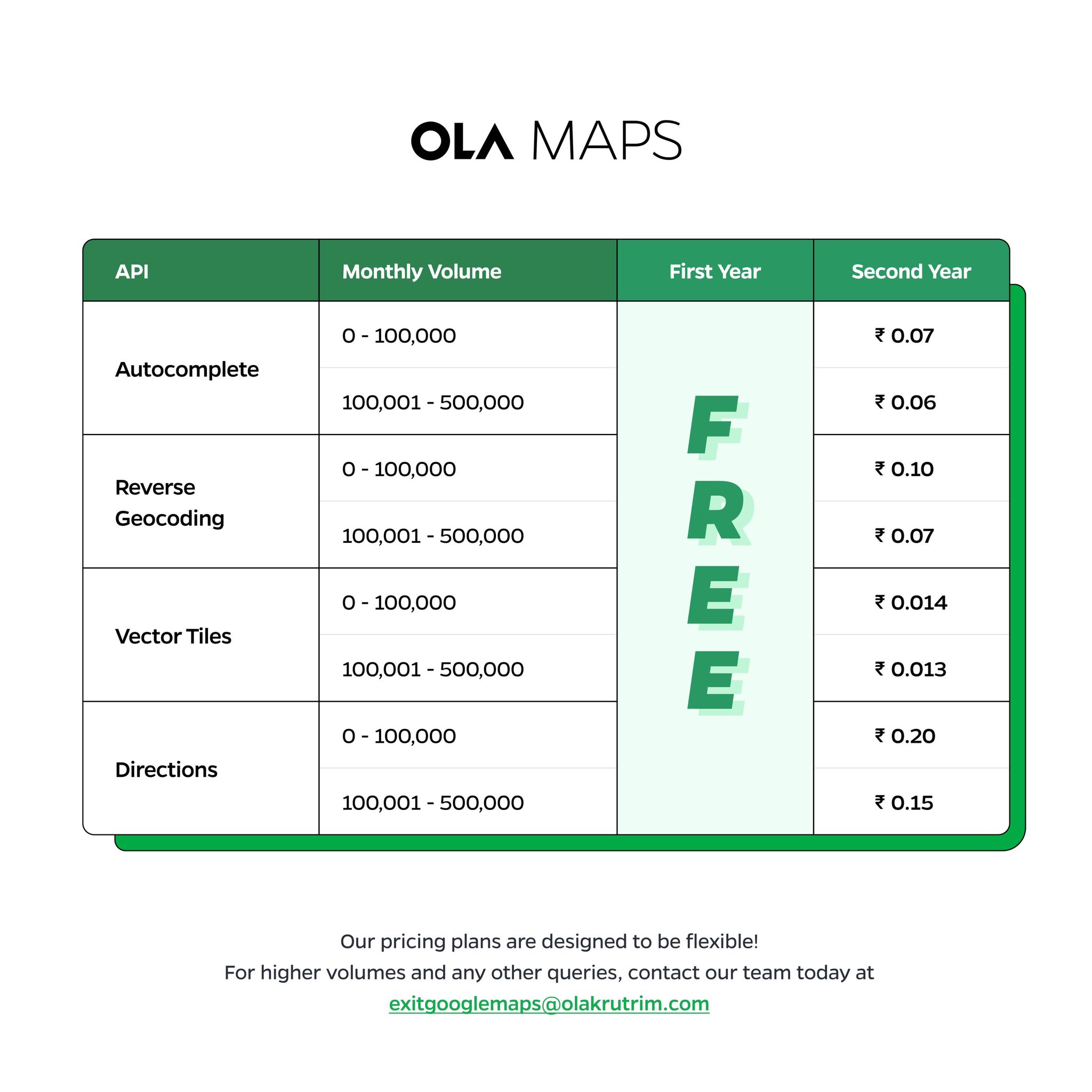Bhavish Aggarwal appears to have made a habit out of taking on established multinational tech giants.
After taking on Uber in India through Ola Cabs, and earlier this year encouraging Indian developers to leave Microsoft’s Azure Cloud for its own Krutrim Cloud, Ola has now set its sights upon Google. Ola has launched its own Maps service for Indian developers, which will be an alternative to Google Maps. To encourage developers and companies to switch from Google Maps, Ola is offering its own Ola Maps for free for a year.

“So many developers are signing up for Ola maps on Krutrim cloud since yesterday,” Ola CEO Bhavish Aggarwal posted on X. “First year is free, and the pricing after the free period will be a fraction of existing products, roughly 70% cheaper and in ₹₹ not $$!” he added.
As per a pricing sheet shared by Aggarwal, Ola Maps will be free for a year. In the second year, API calls range will from Rs. 0.013 to Rs. 0.2 for different mapping functions such as reverse geocoding and directions. For large customers, who’d need more than 5 lakh API calls a month, Ola has asked them to get in touch at an email id that leaves little doubt about the project’s goals: [email protected].

Ola’s Maps solution had been announced by Aggarwal earlier this week. He’d said that Ola had developed its own Maps solution based on the top of existing open source maps, and had begun using it in its own operations. He’d said that the move away from Google Maps would save it Rs. 100 crore per year. He’d soon announced that Ola Maps would be available on Ola’s Krutrim Cloud for whoever wanted to use it.
It would make sense for Ola to develop its own Maps solution. For starters, Ola was paying Google each time a ride was booked on its platform for using its maps service, and transitioning to its own maps will directly help the company’s bottom line. But more crucially, Ola has a lot of data on how India’s roads and cities look — its cabs have been operating for more than a decade, and this data could help build a robust mapping solution. More recently, Ola’s electric scooters have begun traversing the length and breadth of India, so that can also be an rich data source for a mapping application as well. It remains to be seen how Ola’s Maps solution fares, and whether it sees widespread adoption, but with its own cloud service and own Ola Maps, Ola appears to be creating an Indian developer suite that offers Indians an indigenous alternative to products from foreign tech giants.